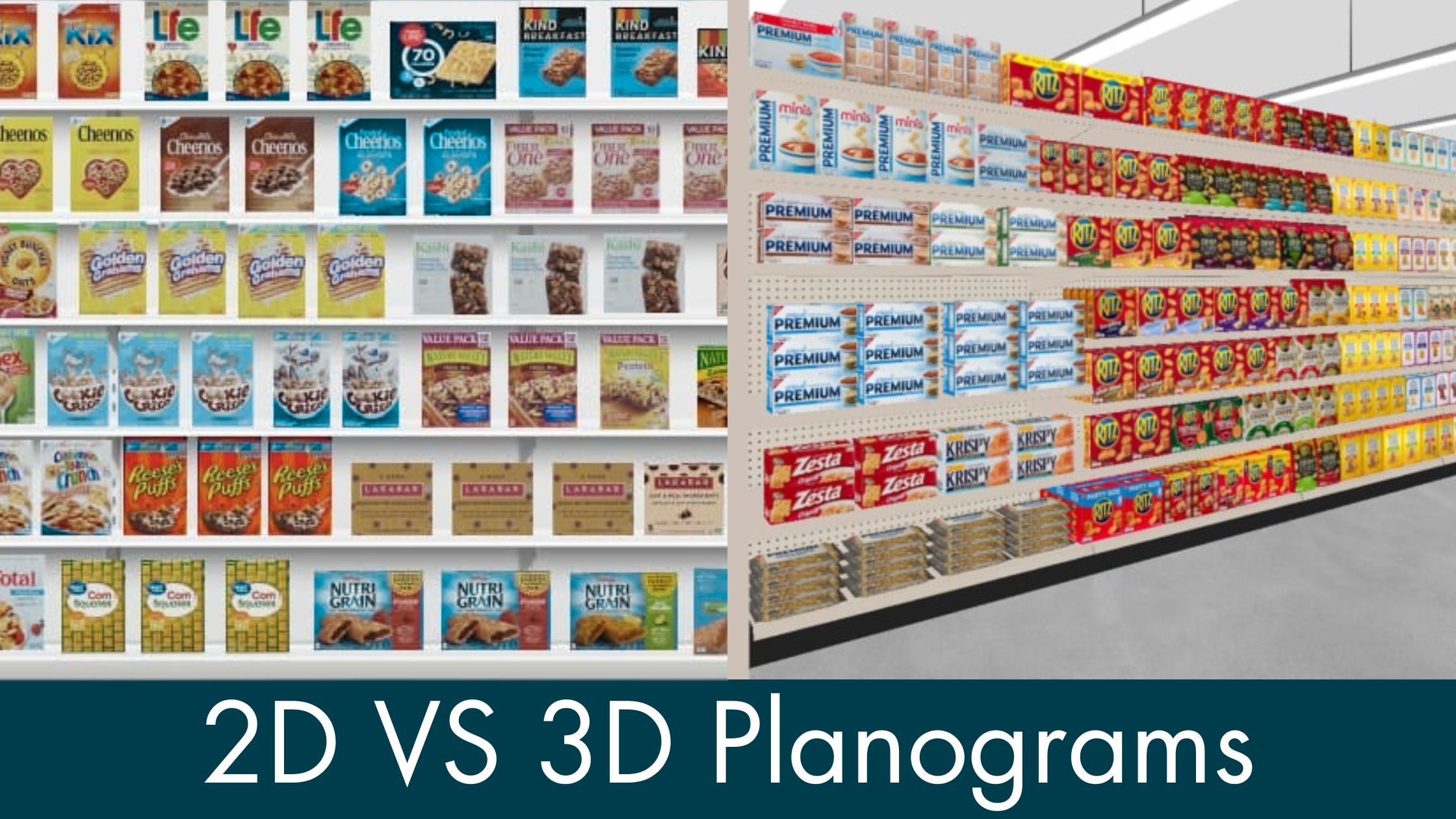What’s the Best Planogram Software? The Shift from 2D to 3D in Retail
Planogram software has transformed how retailers plan and execute visual merchandising. By replacing paper-based diagrams with digital layouts, these tools have brought structure, efficiency, and brand consistency to store planning at scale.
Yet even with these advancements, traditional planogram software was built for an era of slower change. Today’s retail environment demands speed, precision, and localized execution — capabilities that static 2D layouts or disconnected visualization tools can’t fully deliver.
As store planning continues to evolve, the next leap forward isn’t just from paper to digital, but from digital to dynamic — connecting visualization, data, and real-time execution in a single, unified platform.
What is a Planogram?
A planogram (POG) is a visual diagram that shows how products should be arranged on shelves, fixtures, or displays. It helps retailers optimize space, maintain brand consistency, and boost sales across locations.
Planograms guide how shoppers experience the store — influencing what they see first, how they navigate aisles, and how brands stand out on the shelf. Today, most POGs are created with digital tools that turn static layouts into data-driven designs (like One Door’s Digital Store Model).
2D Planogram Software
2D planogram software provides a simple, top-down view of product placement. It’s fast, familiar, and easy to update — ideal for quick resets and standard store formats. Retailers use these tools to design shelf arrangements, optimize facings, and align stores with corporate brand standards.
While efficient, 2D tools can’t fully capture the complexity of real-world environments or the shopper’s point of view, which is a growing limitation as store planning becomes more localized and experience-driven.
3D Planogram Software
3D planogram software brings stores to life with realistic, three-dimensional renderings. Retail teams can visualize layouts, test ideas, and understand how shoppers interact with displays — all within a virtual environment.
Within One Door’s platform, 3D visualization capabilities function as a concept studio — a creative, data-informed space where retailers can experiment, validate, and collaborate in immersive virtual stores before execution. From lighting and layout decisions to shopper flow, 3D tools create actionable insights that drive smarter store design and faster execution.
3D vs. 2D Planogram Software
Choosing between 2D and 3D planogram software depends on how retailers approach planning, visualization, and collaboration. Both formats serve valuable purposes: 2D tools deliver speed and simplicity, while 3D environments offer realism and depth.
The following areas highlight what retail teams should consider when evaluating the right balance between the two — and how they can work together in a modern store planning workflow.
Hardware
Most 2D planogram software runs easily on laptops or desktops with no special equipment required. It’s fast, accessible, and simple to deploy, making it ideal for efficiency-focused teams.
3D planogram software also runs on standard computers, allowing teams to build and explore virtual store environments with 360-degree product views and navigable aisles — no headset required.
For fully immersive experiences, virtual reality (VR) headsets add another layer of engagement, enabling realistic walkthroughs, lighting simulations, and eye-tracking studies for deeper shopper insights. These capabilities can scale from desktop visualization to immersive 3D environments, depending on project scope and hardware.
Visuals
2D planograms use flat, top-down layouts and simple visual cues like labels or color coding to guide product placement. Modern 2D tools add interactivity, allowing users to virtually navigate aisles and click on products for a closer look.
3D planogram software advances this visualization, replicating store environments with photorealistic detail. Teams can rotate products, adjust lighting, and walk through virtual aisles to assess spatial flow and shopper visibility. The result is a lifelike, immersive experience that allows planners to make more confident design decisions before store execution.
Building Process
Creating a 2D planogram involves outlining the store layout — walls, aisles, and fixtures — and placing products using a drag-and-drop interface. It’s quick and intuitive, supporting fast iterations but offering only a simplified view of spatial relationships.
In contrast, building a 3D planogram begins by setting up a virtual store environment and adding fixtures for a realistic layout. Teams can import data to auto-populate shelves or manually stock displays and signage as they would in-store.
With desktop or VR navigation, visual merchandisers can walk through aisles, test configurations, and make life-size adjustments before rollout — ensuring precise, data-informed planning.
Research & Accuracy
2D planograms are effective for testing basic visual merchandising strategies through mock stores, online surveys, or interactive shelf studies. These methods provide quick, cost-effective ways to collect shopper feedback and refine layouts.
3D planograms extend research capabilities through immersive virtual stores and interactive online environments. Using VR or webcam-based studies, teams can observe real shopper behavior — from gaze patterns to movement — to understand how displays influence purchase decisions. These deeper behavioral insights allow for more informed, data-driven planning.
Outputs
Both 2D and 3D planogram software produce valuable outputs that support collaboration and communication across teams.
2D tools generate visual diagrams, placement reports, and interactive shelf maps that integrate with other retail systems. 3D platforms build on this by creating virtual walkthroughs, photorealistic renderings, and 360-degree views that bring designs to life for stakeholders.
These dynamic outputs enhance internal alignment and support training, executive reviews, and cross-functional planning.
File Types
2D planogram software typically saves image files (JPEG, PNG), vector files (SVG, PDF), and proprietary formats. 3D planogram software supports these same file types for sharing and communication, and adds 3D and VR-compatible files for use in advanced visualization platforms.
Conclusion: What is the Best Planogram Software?
Both 2D and 3D planogram software have a place in modern retail planning, but the real opportunity lies in moving beyond them. Traditional planogram tools can’t deliver the speed, localization, and real-time precision that modern retail now demands.
The next evolution isn’t simply better planogram software. It’s a single, dynamic platform that connects planning, visualization, and execution.
Download our Dynamic Digital Planogram Guide to see how leading retailers are embracing the next evolution of store design with One Door.
